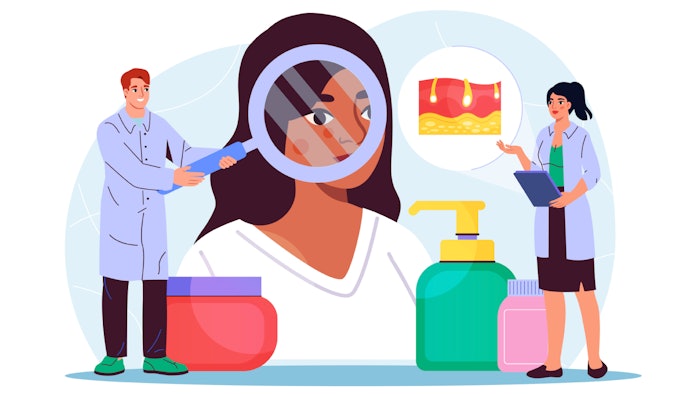Technology trends, techniques, and tips
Where does aesthetic medicine stand today, and where is it going?

Over the last 50 years, medicine has experienced a revolution with the invention of the electronic medical record (EMR) followed by countless creations to improve clinical practice and the patient experience. At the American Academy of Dermatology’s latest Innovation Academy in July, attendees witnessed recent developments, new products and approaches, and emerging trends.
DermWorld Skin Care News caught up with Ashish C. Bhatia, MD, FAAD, to examine these exciting updates. Dr. Bhatia is co-director of dermatologic, laser, and cosmetic surgery and medical director for dermatologic research at Oak Dermatology in Chicago. He is also associate professor of clinical dermatology at Northwestern University Feinberg School of Medicine, adjunct professor of clinical dermatology at Rush School of Medicine, and president of the American Society of Lasers in Medicine and Surgery (ASLMS).
DermWorld: Why do you think technology plays such a constant and critical role in dermatology practice?
Dr. Bhatia: In medical school, I selected dermatology because of its visual nature and easily accessible subject matter — the skin, hair, nails, and subcutis — as well as its breadth and depth of the various subjects within dermatology, such as pediatrics, dermatopathology, inflammatory diseases, surgical dermatology, and aesthetic and regenerative medicine.
 Ashish C. Bhatia, MD, FAAD
Ashish C. Bhatia, MD, FAAD
Beyond the philosophical and academic reasons for technology playing a constant and critical role in dermatology, there are some very practical reasons as well. First, there is a constant push for efficiency in dermatology practice. Technological advances such as ambient scribes can help physicians chart more accurately and effectively with less effort while focusing on the patient during the encounter. Advances in diagnostics help dermatologists make diagnoses more accurately, and track progression of disease or improvement in a condition more objectively over time. Molecular tests help to predict the course of disease based upon genetic profiles, especially in cutaneous oncology.
Technology will continue to play a tremendous role in the field. The advances I see brewing in labs and being designed by engineers and scientists will continue to change the way we practice every day.
In the next five years alone, dermatologists will see many new tools to assist in examination and diagnostics, guide with decision support, help educate the patient, document more efficiently and accurately, and provide patient-specific therapeutics.
DermWorld: Speaking of five years, what do you predict are the emerging trends in aesthetic dermatology that could be available by 2030?
Dr. Bhatia: There will be technological advancements which will allow for safer injections, more precise and targeted laser delivery, and automated diagnostics and procedure planning. Trends will continue toward noninvasive treatment modalities with less downtime and increased safety. Dermatologists will also see some advancements in devices with novel wavelengths, energy sources, and delivery mechanisms, which will allow for systematized treatments of conditions. Of course, artificial intelligence will play an even larger role.
Additionally, there will be customized regenerative medicine solutions derived from autologous sources. An example of this is a company that noninvasively harvests a person’s stem cells and banks them from hair follicles. It also can produce and send people their own secretome, a concoction of their autologous growth factors and other natural acellular products.
DermWorld: What are the biggest gamechangers that have become recently available or could be realistic by 2030?
Dr. Bhatia: The biggest gamechangers will be technologies that improve efficiency in practice and outcomes for patients (both efficacy and safety). Also, similar to how biologics have been having their heyday in therapeutics, small molecules are on the rise and have some distinct advantages. For androgenetic alopecia, one such newcomer making headlines is PP405 — a once-daily, small-molecule topical that flips on the stem cells in hair follicles, and it has shown good preliminary results in clinical trials.
DermWorld: How will these technology trends develop, and in what areas of practice will they make the biggest impact?
Dr. Bhatia: Technology will make an impact on every aspect of practice. This includes how patients interact with the practice, how information is obtained from the patient and entered into the chart/EMR, how patients are diagnosed, treated, and educated, and how post-visit communication takes place.
Many of the routine and monotonous tasks of clinicians will be taken over by technology, allowing us to spend more time interpreting the data from these technologies to oversee patient care. An example of this is a device in the pilot phase in Europe that may perform a skin exam quicker and more accurately than a human, cataloging and prospectively tracking changes in lesions both visually and dermatoscopically.
DermWorld: Do you have any helpful tips for dermatologists as they integrate these technologies into everyday use?
Dr. Bhatia: Unless you are a bleeding-edge technology person who must have every new tool or cool toy, it may be better to allow others to explore and try technologies for a bit before jumping in. This will allow time for some of the kinks to be worked out and will allow you to see which technologies succeeded in real-world use and which ones fail. Doing so could help you avoid the frustration and expense of early adoption of technology that has not been fully vetted or proves to not be practical. It also allows the companies producing the technology to catch up on production and enhance the products beyond version 1.0.